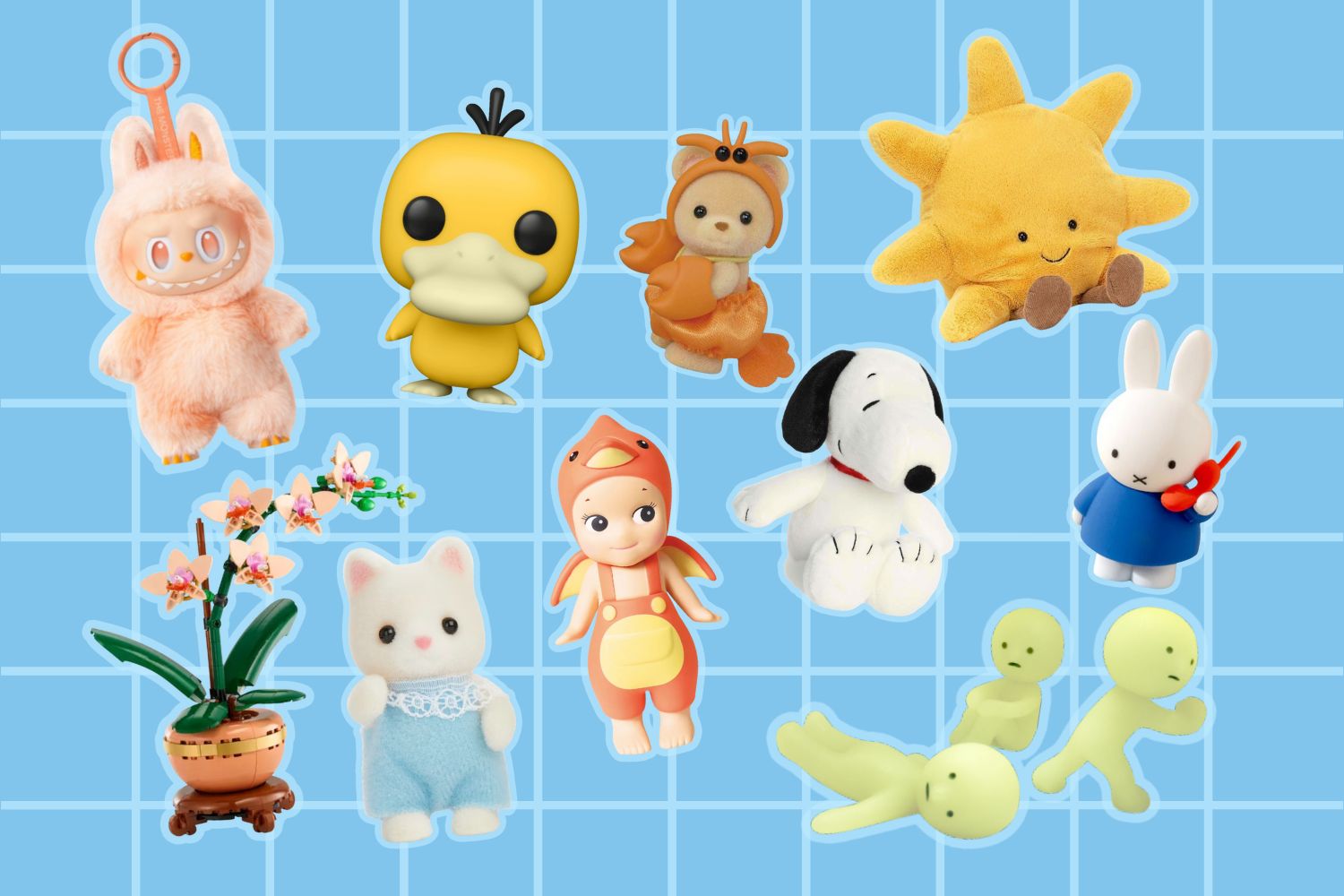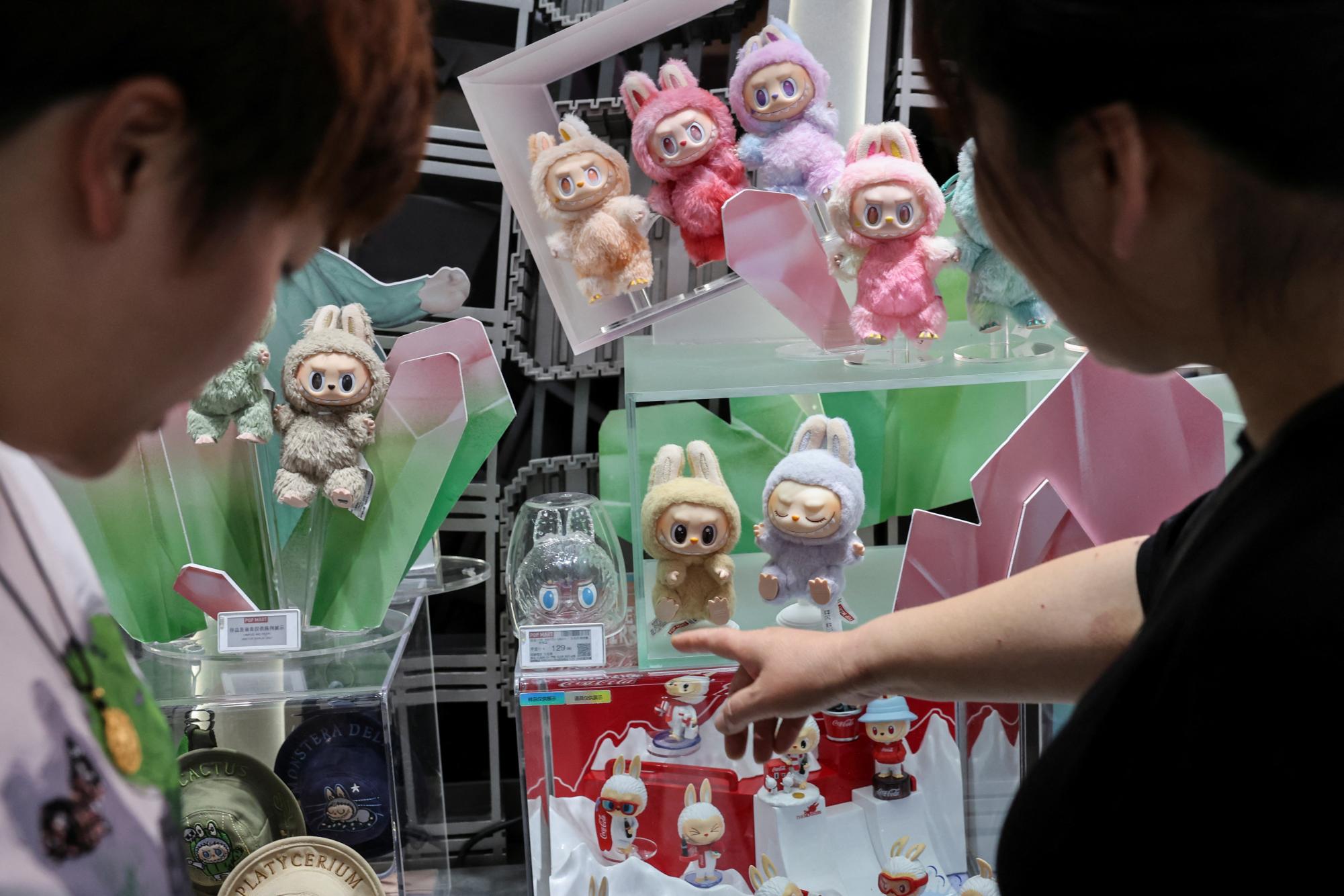

The term “kidult” first appeared in the 1950s, and it was meant to describe adults who enjoyed childlike nostalgic programming. Today, many kids are hobbyists who collect toys for their rarity, aesthetic appeal, or connection to their favorite franchises or characters. Gen Z has brought the “kidult” back with young adults dabbling in the art of collecting LEGO sets, completing their Funko Pop/figurine collection, and hunting down the latest Labubus. Even in fashion, we see hints of this return to childhood. It is all about a longing for emotional softness.
On the surface, it’s easy to dismiss this as another quirky generational phase, a product of nostalgia and overconsumption. But the kidult trend is more than just adults bidding and playing with toys—it’s a reflection of a deeper emotional and cultural shift.
In the past, toys were associated with children and their world of imagination. However, continuously the toy market has undergone a quiet revolution with a growing share of its consumers becoming adults who buy toys not for children but themselves.
So let’s face it, growing up in 2025 doesn’t look the way it used to. Our parents’ generation grew up quicker, did more than we do at their age. They embody independence and resilience, building careers, working financially towards their goals, creating companies, and raising families. Meanwhile, many older Gen Zers are still navigating what adulthood even means. Commissioned by Micro-Games American Entertainment Miniverse and conducted by OnePoll, a poll of 2,000 American Gen Zers and millennials. They found that 59 percent of people consider themselves “kidults”. Economic instability, overwhelming student debt, political chaos—it’s not surprising that many young people are rejecting traditional adult milestones like buying houses, having kids, or climbing corporate ladders. When adulthood feels increasingly out of reach or unappealing, retreating to the comfort of childhood isn’t just tempting—it’s therapeutic. However, this attachment to our childhood favorites is digging us further into the pit of not being able to manage adult life.
According to a new report from market research firm Circana,
“As many as 43% of adults purchased a toy for themselves in the past year, with the top reasons being for personal fun, socialization, and collecting.”
Gen Z is the generation with the worst escapism problem.
And businesses know this. Some might assume that the rise of kidult is because companies keep targeting adults with the prospect of them buying more and more toys, adapted to be palatable and socially acceptable to the adult market, like decorative Legos with simpler and mature designs that are displayable.
But businesses are intentionally marketing and producing nostalgic items because they have noticed Gen Z and its favor towards them. They know that Gen Z is more likely to buy something featuring a beloved childhood character and that we are doing our best to avoid the reality of adult responsibilities.
This isn’t a new strategy either. For years, marketers have targeted identity, tapping into people’s sense of self. The more a product can reflect back who we think we are—or want to be—the more likely we are to buy it. That’s why companies constantly create new categories. Not just toys, but “toys for adults”; not just skincare, but “skincare for people who game” or “for people who bike to work”. It’s why you’ll see the same product marketed as eco-conscious for the environmentally aware, minimalist for the design-oriented, and clean for the health-obsessed—even if it’s all the same thing.
This hyper-categorization mirrors what happens socially, too. In high school and well into adulthood, people often divide themselves into increasingly specific groups: not just “sports kids,” but “track kids,” “basketball kids,” “skaters,” or “gym rats”. Music fans aren’t just fans; they’re “K-pop stans,” “indie heads,” “rap purists,” or “Swifties.” While it’s natural to find community in shared interests, constantly slicing culture into niche identities can make things feel more exclusive than inclusive. People feel pressure to choose a label—and stick to it—instead of just enjoying things freely. And in doing so, we often limit our chances to connect across boundaries that didn’t need to exist in the first place, making life feel more fragmented, even when people might have more in common than they think.
This obsession with identity and categorization doesn’t just shape what we buy or who we hang out with—it affects how we define life’s stages, too. We keep creating more and more boxes, yet we rarely agree on what they actually mean. If you ask, “What makes someone a child?” you might get a clear answer: being under a certain age, or being emotionally immature. But if you ask, “What makes someone an adult?” the answer often turns into another question: “Well… what is growing up anymore?”
Toys, cartoons, video games, and even childhood snacks can be seen as emotional security blankets. In a chaotic, unpredictable world, the things we surround ourselves with are soft, safe, and familiar. The kidult trend is self-soothing in action—not unlike an adult version of a pacifier. Is that infantilizing? Maybe. Is it understandable? Yes. Should we encourage it? No.
Now I’m not saying that indulging in a little nostalgia is wrong, as all are participants in acute kidulting, and I’m no exception to the occasional cartoon binge. But it is an issue when adults pull too far in and actually behave like children, and vice versa for children.
The kidult trend is a clear show of our generation’s arrested development. By not owning up to the full realities of being adults and growing up, we are stunting ourselves emotionally and socially.
Our generation eats up the kidult trend simply because we are trying to convince ourselves that we are kids——simply refusing to grow up. All these collectibles, board games, stuffed animals, and toys showcase the tight grip our generation is keeping on their childhood. What we’re trying to do is to appropriate children’s things to the image of an adult, so that we feel less guilty of not owning up to the responsibilities of growing up.
Whatever the reason may be for the sudden surge in “kidults,” it certainly raises a lot of concerns about why adults feel the need to revert back to a childlike state of mind.
A couple of years ago, computer science was the field to be in. People viewed the field as a magical key to an upper-middle-class lifestyle. Myths were spread about the six-figure salaries that people gained right after graduating from their undergraduate schools. Having a computer science degree was supposed to protect you from an ever-unpredictable economy, like it was a magical shield that protected against all negatives.
Now, the myths have become forgotten as recent computer science graduates are faced with the troublesome job market. Some computer science graduates have started scrambling to find certain specializations in an increasingly competitive market.
To be fair, in the computer science field, the job market, in general, is tough for all people from a variety of majors. With the threat of new technology becoming an active competitor for some of the few jobs in an unstable economy, fear of unemployment is a sentiment that many young adults, especially recent college graduates, have become familiar with.
Maybe there being little jobs would not be as big a problem if inflation were not as high as it is. Wages had only begun to catch up to the increase in the prices of commodities last year, with wages increasing more than prices for the first time in what feels like forever, but even this “catch-up” was a small increase overall.
Though the pandemic happened five years ago, many of its effects can still be felt today, and maybe that is why it feels like the pandemic had actually happened only a year ago. Today’s generation is still dealing with the huge hit to our socialization skills and the related loneliness epidemic. The pandemic’s effects on the mental health of Gen Z individuals were essentially disastrous. A Northwestern study proved that 18-39-year-old adults had a smaller decrease in self-reported levels of anxiety and depression.
Prices increased during the pandemic, and it feels like they have never come down. At the time, young adults were told that as soon as oil prices went down, as soon as America went back to normal with the vaccine, everything would return to the picture-perfect transition to the workforce that was sold to all college graduates. But, as proven by the lasting mental health effects and the painful price increases, the economy does not feel like it’s back to pre-COVID levels for the average person.
In times of extreme stress, the human body has three built-in responses to cope: fight, freeze, and flee. It seems that Gen Z has collectively chosen the option of fleeing, choosing to chase the eras where economic downturn was not the norm.
Perhaps the reason why being a “kidult” seems so common nowadays is because many adults have decided they want a return to the “good old days” where they didn’t have to worry about the prices of their favorite comfort foods or the rising unemployment rate. These “good old days” for Gen Z are our childhood, an age where we are blessed with a lack of responsibilities that feels enviable as we grow up.
This kidult trend is a cry for help from the youngest generation in the workforce. It is Gen Z’s way of asking for someone to find a way to make the optimistic outlook many had when they were younger a reality. However, there is no one person who can fix the economy themselves, so the next best bet is to return to an era where a better future felt like a guarantee.
The other reason this trend seems far more prevalent now might be because of a marketer’s affinity for social media trends. If companies have the idea that connecting their products to nostalgia for an era that was only 10 years ago would make profit margins increase, then companies will do exactly that. Now, we have various fast fashion companies pouring more money into photoshoots depicting the latest Y2K collection and streaming services showing more clips of old childhood shows on social media platforms.
The kidult trend is not the villain in this scenario. It’s a coping mechanism for a generation that has been abandoned by the people who sold them the story of success. Of course, overconsumption of anything should be seen as a problem. Drinking too much water can cause harm, but that does not mean we should not drink it.
However much we want to turn back time, we can’t, but an occasional window into the past doesn’t hurt. We’re all scared of what the future may hold, and holding the past close to our chests like our favorite childhood teddy bears may be the reprieve we deserve before facing the world as it is.





Mason • Sep 9, 2025 at 12:49 pm
dis one was tuff good work all yall I read this like 6 or 7 times